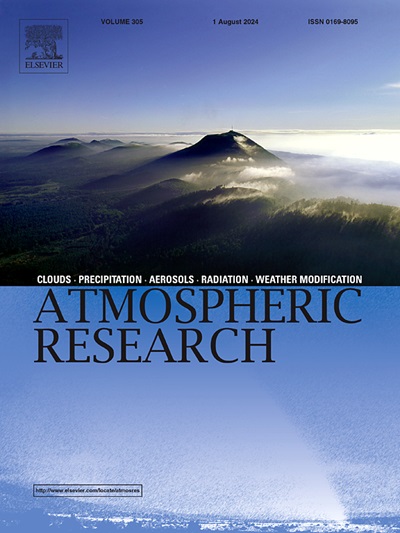基于多机器学习算法的长期卫星日温度反演的益处
IF 4.5
2区 地球科学
Q1 METEOROLOGY & ATMOSPHERIC SCIENCES
引用次数: 0
摘要
先进甚高分辨率辐射计(AVHRR)是一种卫星传感器,在轨道上运行了40多年,提供2000年以前的遥感图像,基于AVHRR反演当前气温(Ta)的精度有很大的提高空间,以获得2000年以前准确的长期Ta数据。在这里,我们的目标是在1983-2000年期间,以5公里的分辨率估计中国地区的日平均(Tave)、最高(Tmax)和最低(Tmin)气温。我们开发了一种基于机器学习(ML)的结合多数据源大数据的卫星检索日温度外推方法,即利用遥感的全面无间隙地表温度数据以及来自再分析数据、地形和当地温度辅助数据的其他相关变量,生成高分辨率Ta数据的扩展时间序列。质量验证结果表明,各ML方法的Tave、Tmax和Tmin平均误差范围分别为0.995 ~ 1.606°C、1.316 ~ 1.971°C和1.396 ~ 1.980°C,均优于ERA5的2.297±1.704°C、3.294±2.016°C和2.873±1.666°C。集成ML方法优于单个算法,产生0.96的高相关系数和1°C的鲁棒平均误差。全国和局部地区多ml逐日Ta新数据空间分布与ERA5基本一致,物理一致性高,具有更高的5 km分辨率。这些更新的温度数据有助于更好地揭示区域尺度上复杂的结构属性,以及探索城市热岛。本文章由计算机程序翻译,如有差异,请以英文原文为准。
Benefit for inversion of long-term satellite daily temperature based on multi-machine learning algorithms
The Advanced Very High-Resolution Radiometer (AVHRR), a satellite sensor has been in orbit for over 40 years, providing remote sensing images before 2000 and there is considerable room for improvement in the accuracy of current air temperature (Ta) inversions based on AVHRR to obtain accurate long-term Ta data before 2000. Here, we aim to estimate daily average (Tave), maximum (Tmax), and minimum (Tmin) air temperatures at a resolution of 5 km for the Chinese region during the period 1983–2000. We developed a satellite-retrieval daily temperature extrapolation method based on machine learning (ML) combining multiple sources of big data, i.e., leveraging comprehensive and gap-free land surface temperature data from remote sensing along with other relevant variables from reanalysis data, topography and auxiliary data of local temperature, to generate extended time series of high-resolution Ta data. Quality validation results indicate that the ML can enhance the accuracy of Ta inversion with average error range of various ML methods being 0.995–1.606 °C, 1.316–1.971 °C and 1.396–1.980 °C for Tave, Tmax, and Tmin, respectively, which is better than the 2.297 ± 1.704 °C, 3.294 ± 2.016 °C and 2.873 ± 1.666 °C of ERA5. Integrated ML method outperforms individual algorithms, yielding a high correlation coefficient of 0.96 and a robust mean error of 1 °C. The spatial distribution of newly daily Ta data from the multi-ML nationwide and local region is homogeneous with ERA5, indicating high physical consistency, and has higher resolution of 5 km. These updated temperature data can be beneficial in better revealing intricate structural attributes on a regional scale, as well as exploring urban heat islands.
求助全文
通过发布文献求助,成功后即可免费获取论文全文。
去求助
来源期刊

Atmospheric Research
地学-气象与大气科学
CiteScore
9.40
自引率
10.90%
发文量
460
审稿时长
47 days
期刊介绍:
The journal publishes scientific papers (research papers, review articles, letters and notes) dealing with the part of the atmosphere where meteorological events occur. Attention is given to all processes extending from the earth surface to the tropopause, but special emphasis continues to be devoted to the physics of clouds, mesoscale meteorology and air pollution, i.e. atmospheric aerosols; microphysical processes; cloud dynamics and thermodynamics; numerical simulation, climatology, climate change and weather modification.
 求助内容:
求助内容: 应助结果提醒方式:
应助结果提醒方式:


